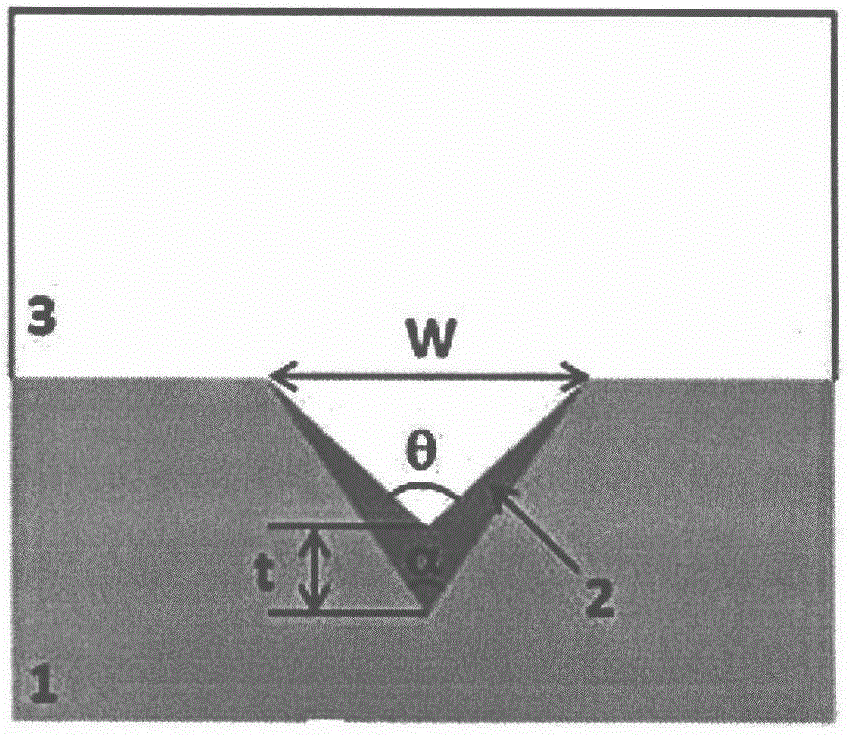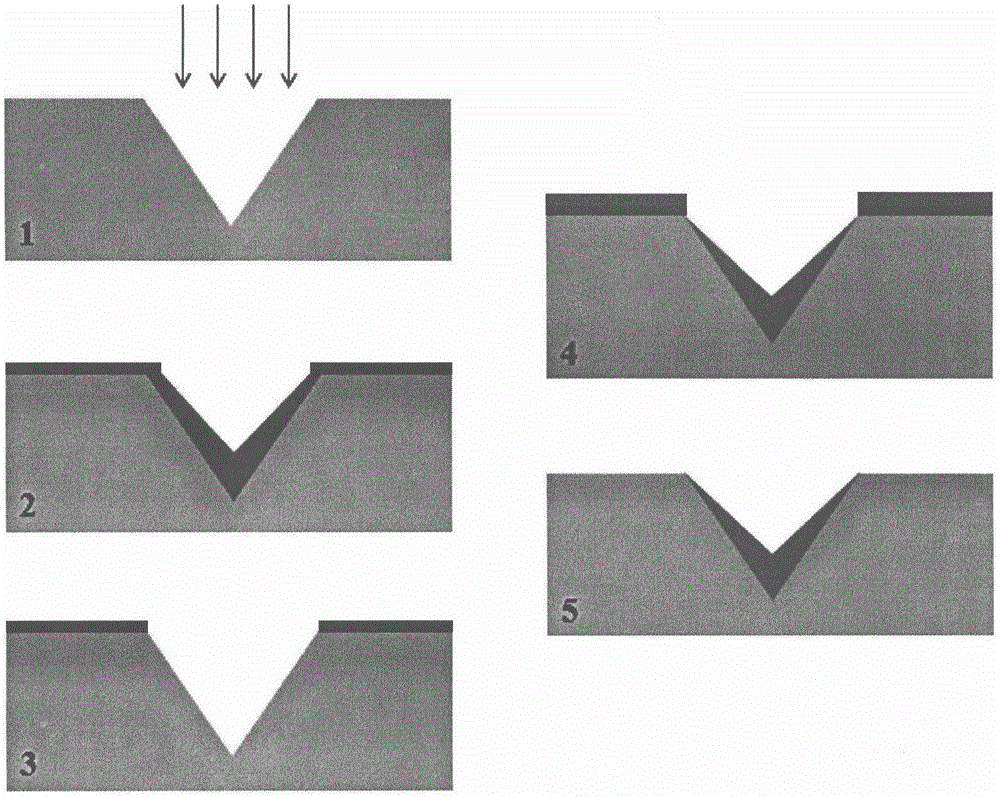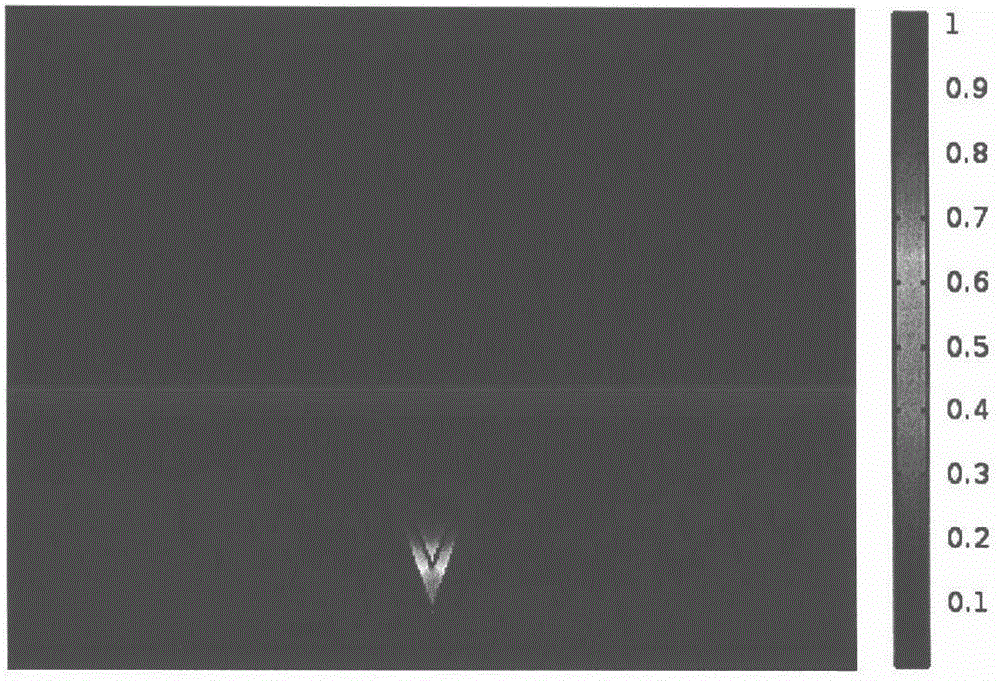Surface plasma waveguide based on sub-wavelength metal V groove superpower light fettering
A surface plasmon, sub-wavelength technology, applied in the field of ionized waveguide, can solve problems such as constraints, metal ohmic loss, and ohmic) loss increasing
- Summary
- Abstract
- Description
- Claims
- Application Information
AI Technical Summary
Problems solved by technology
Method used
Image
Examples
Embodiment 1
[0020] Embodiment 1: the width of the upper side of the V groove in this embodiment is W=1 micron, and the angles α and θ of the V groove are respectively taken as α=40 degrees and θ=45 degrees, and the silicon dioxide film layer gradually changes from zero from top to bottom. The thickness is t=5 nm. The working wavelength is selected as the communication wavelength, that is, the wavelength is 1550 nanometers. At the communication wavelength, the dielectric constant of the material silver is -129+3.3i, the dielectric constant of the material silicon dioxide is 2.25, and the dielectric constant of air is 1.
[0021] Before discussing the transmission performance of the surface plasmon waveguide, let us first define two evaluation parameters: the transmission length L and the mode area S. The transmission length is used to describe the loss characteristics of the waveguide, and the longer the transmission length, the smaller the optical loss. The mode area is used to define th...
PUM
 Login to View More
Login to View More Abstract
Description
Claims
Application Information
 Login to View More
Login to View More - R&D
- Intellectual Property
- Life Sciences
- Materials
- Tech Scout
- Unparalleled Data Quality
- Higher Quality Content
- 60% Fewer Hallucinations
Browse by: Latest US Patents, China's latest patents, Technical Efficacy Thesaurus, Application Domain, Technology Topic, Popular Technical Reports.
© 2025 PatSnap. All rights reserved.Legal|Privacy policy|Modern Slavery Act Transparency Statement|Sitemap|About US| Contact US: help@patsnap.com



